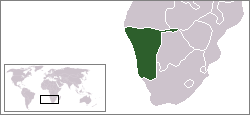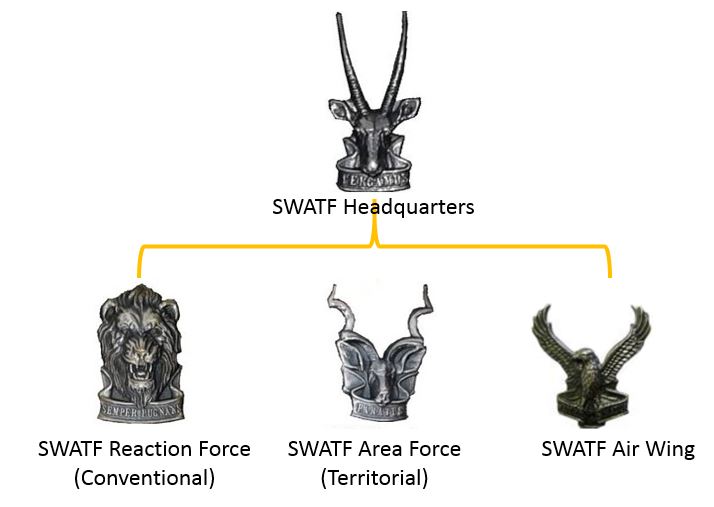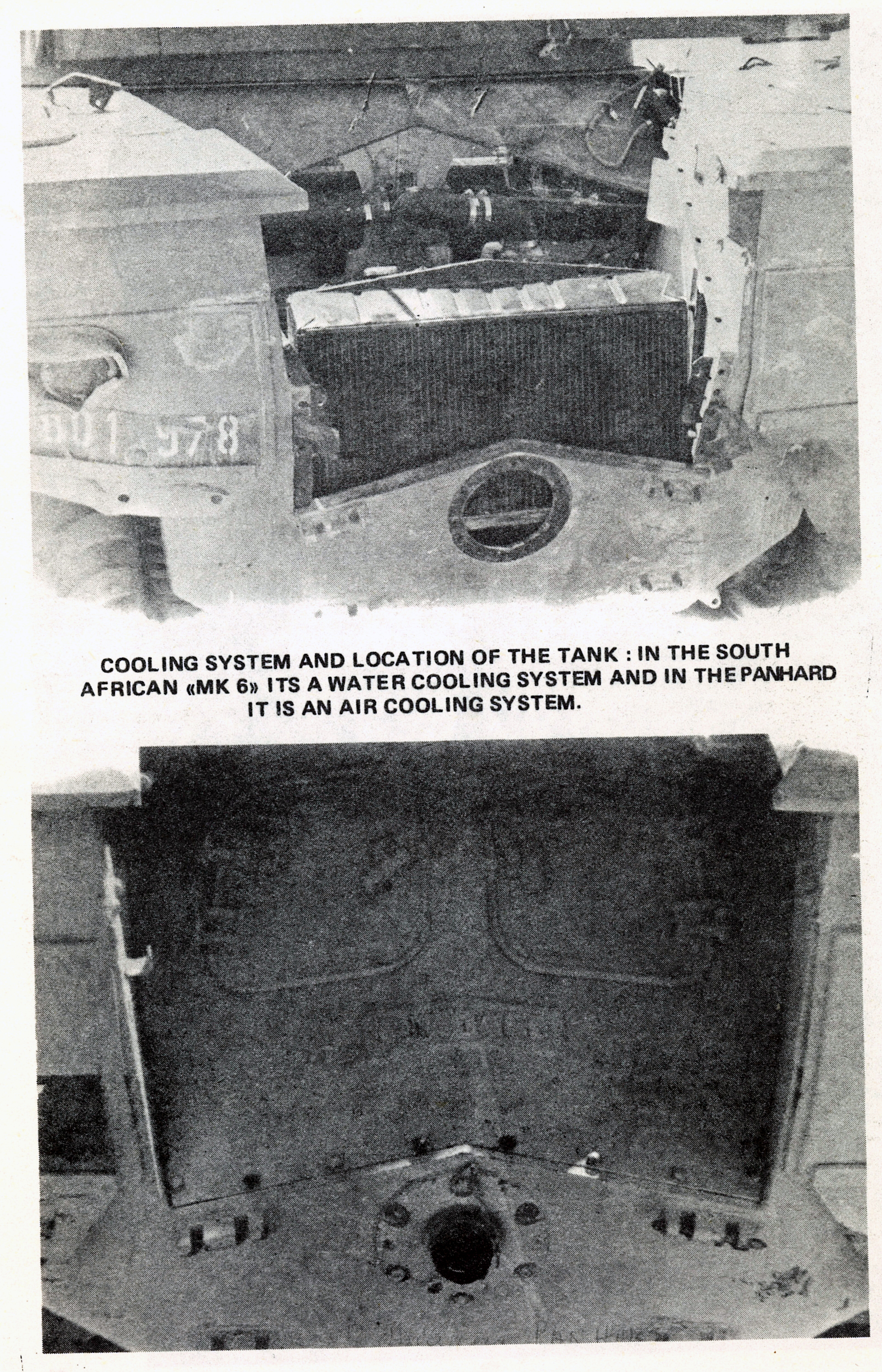|
911 Battalion (SWATF)
911 Battalion was part of the South West African Territorial Force's 91 Brigade. History This unit was formed in 1977 situated sixty kilometres south of Windhoek at Oamites an old disused copper mine. 911 Battalion was made up of various ethnic groups from SWA, such as Hereros, Damaras, Tswanas, Basters and Coloureds. 911 Battalion became known as "Swing Force" due to its ability to operate as a conventional unit or as a Counter-insurgency (COIN) unit. It recruited from South West Africa at large and deployed predominantly as a reserve force. An infantry element, a mechanised contingent, artillery, and a regiment of Eland armoured cars was included. The unit was never mobilised ''en masse''. 911 Battalion was part of 91 Brigade. Operational area The battalion's main operational area was Owamboland, via Oshivello, about two hundred kilometres south of the SWA/Angola border. On entering the Oshivello gate, soldiers had passed over the so-called 'red line' which meant in effec ... [...More Info...] [...Related Items...] OR: [Wikipedia] [Google] [Baidu] |
South West African Territorial Force
The South West Africa Territorial Force (SWATF) was an auxiliary arm of the South African Defence Force (SADF) and comprised the armed forces of South West Africa (now Namibia) from 1977 to 1989. It emerged as a product of South Africa's political control of the territory which was granted to the former as a League of Nations mandate following World War I. History and background From 1966 until 1989, South African security forces waged a long and bitter counterinsurgency conflict against indigenous nationalists in what was then South West Africa, represented by the Marxist South West African People's Organisation (SWAPO) and its military wing, the People's Liberation Army of Namibia (PLAN). As the guerrilla war intensified, however, it became clear that the local civilian police alone were not enough to cope with SWAPO/PLAN incursions and escalating unrest. Consequently, military units were deployed for the first time; 60,000 South African combat troops were engaged in South W ... [...More Info...] [...Related Items...] OR: [Wikipedia] [Google] [Baidu] |
Counter-insurgency
Counterinsurgency (COIN) is "the totality of actions aimed at defeating irregular forces". The Oxford English Dictionary defines counterinsurgency as any "military or political action taken against the activities of guerrillas or revolutionaries" and can be considered war by a state against a non-state adversary. Insurgency and counterinsurgency campaigns have been waged since ancient history. However, modern thinking on counterinsurgency was developed during decolonization. Within the military sciences, counterinsurgency is one of the main operational approaches of irregular warfare. During insurgency and counterinsurgency, the distinction between civilians and combatants is often blurred. Counterinsurgency may involve attempting to win the hearts and minds of populations supporting the insurgency. Alternatively, it may be waged in an attempt to intimidate or eliminate civilian populations suspected of loyalty to the insurgency through indiscriminate violence. Models ... [...More Info...] [...Related Items...] OR: [Wikipedia] [Google] [Baidu] |
Military Units And Formations Of South Africa
A military, also known collectively as armed forces, is a heavily armed, highly organized force primarily intended for warfare. It is typically authorized and maintained by a sovereign state, with its members identifiable by their distinct military uniform. It may consist of one or more military branches such as an army, navy, air force, space force, marines, or coast guard. The main task of the military is usually defined as defence of the state and its interests against external armed threats. In broad usage, the terms ''armed forces'' and ''military'' are often treated as synonymous, although in technical usage a distinction is sometimes made in which a country's armed forces may include both its military and other paramilitary forces. There are various forms of irregular military forces, not belonging to a recognized state; though they share many attributes with regular military forces, they are less often referred to as simply ''military''. A nation's military may f ... [...More Info...] [...Related Items...] OR: [Wikipedia] [Google] [Baidu] |
Military Units And Formations Of The Cold War
A military, also known collectively as armed forces, is a heavily armed, highly organized force primarily intended for warfare. It is typically authorized and maintained by a sovereign state, with its members identifiable by their distinct military uniform. It may consist of one or more military branches such as an army, navy, air force, space force, marines, or coast guard. The main task of the military is usually defined as defence of the state and its interests against external armed threats. In broad usage, the terms ''armed forces'' and ''military'' are often treated as synonymous, although in technical usage a distinction is sometimes made in which a country's armed forces may include both its military and other paramilitary forces. There are various forms of irregular military forces, not belonging to a recognized state; though they share many attributes with regular military forces, they are less often referred to as simply ''military''. A nation's military may f ... [...More Info...] [...Related Items...] OR: [Wikipedia] [Google] [Baidu] |
Military History Of Namibia
A military, also known collectively as armed forces, is a heavily armed, highly organized force primarily intended for warfare. It is typically authorized and maintained by a sovereign state, with its members identifiable by their distinct military uniform. It may consist of one or more military branches such as an army, navy, air force, space force, marines, or coast guard. The main task of the military is usually defined as defence of the state and its interests against external armed threats. In broad usage, the terms ''armed forces'' and ''military'' are often treated as synonymous, although in technical usage a distinction is sometimes made in which a country's armed forces may include both its military and other paramilitary forces. There are various forms of irregular military forces, not belonging to a recognized state; though they share many attributes with regular military forces, they are less often referred to as simply ''military''. A nation's military may ... [...More Info...] [...Related Items...] OR: [Wikipedia] [Google] [Baidu] |
South African Border War
The South African Border War, also known as the Namibian War of Independence, and sometimes denoted in South Africa as the Angolan Bush War, was a largely asymmetric conflict that occurred in Namibia (then South West Africa), Zambia, and Angola from 26 August 1966 to 21 March 1990. It was fought between the South African Defence Force (SADF) and the People's Liberation Army of Namibia (PLAN), an armed wing of the South West African People's Organisation (SWAPO). The South African Border War resulted in some of the largest battles on the African continent since World War II and was closely intertwined with the Angolan Civil War. Following several years of unsuccessful petitioning through the United Nations and the International Court of Justice for Namibian independence from South Africa, SWAPO formed the PLAN in 1962 with material assistance from the Soviet Union, China, and sympathetic African states such as Tanzania, Ghana, and Algeria. Fighting broke out between PLAN and th ... [...More Info...] [...Related Items...] OR: [Wikipedia] [Google] [Baidu] |
Namibian War Of Independence
The South African Border War, also known as the Namibian War of Independence, and sometimes denoted in South Africa as the Angolan Bush War, was a largely asymmetric conflict that occurred in Namibia (then South West Africa), Zambia, and Angola from 26 August 1966 to 21 March 1990. It was fought between the South African Defence Force (SADF) and the People's Liberation Army of Namibia (PLAN), an armed wing of the South West African People's Organisation (SWAPO). The South African Border War resulted in some of the largest battles on the African continent since World War II and was closely intertwined with the Angolan Civil War. Following several years of unsuccessful petitioning through the United Nations and the International Court of Justice for Namibian independence from South Africa, SWAPO formed the PLAN in 1962 with material assistance from the Soviet Union, China, and sympathetic African states such as Tanzania, Ghana, and Algeria. Fighting broke out between PLAN and th ... [...More Info...] [...Related Items...] OR: [Wikipedia] [Google] [Baidu] |
SWATF 91 Brigade Structure V3
The South West Africa Territorial Force (SWATF) was an auxiliary arm of the South African Defence Force (SADF) and comprised the armed forces of South West Africa (now Namibia) from 1977 to 1989. It emerged as a product of South Africa's political control of the territory which was granted to the former as a League of Nations mandate following World War I. History and background From 1966 until 1989, South African security forces waged a long and bitter counterinsurgency conflict against indigenous nationalists in what was then South West Africa, represented by the Marxist South West African People's Organisation (SWAPO) and its military wing, the People's Liberation Army of Namibia (PLAN). As the guerrilla war intensified, however, it became clear that the local civilian police alone were not enough to cope with SWAPO/PLAN incursions and escalating unrest. Consequently, military units were deployed for the first time; 60,000 South African combat troops were engaged in South W ... [...More Info...] [...Related Items...] OR: [Wikipedia] [Google] [Baidu] |
Eland Mk7
The Eland is an air portable light armoured car based on the Panhard AML. Designed and built for long-range reconnaissance, it mounts either a 60mm (2.4 in) breech-loading mortar or a Denel 90mm (3.5 in) gun on a very compact chassis. Although lightly armoured, the vehicle's permanent 4X4 drive makes it faster over flat terrain than many tanks. Eland was developed for the South African Defence Force (SADF) in South Africa's first major arms programme since World War II, with prototypes completed in 1963. By 1991, 1,600 examples had been built for home and export; prominent foreign operators included Morocco and Zimbabwe. Local overhauls incorporating lessons from internal operations have resulted in a vehicle capable of withstanding the unforgiving Southern African environment and highly mobile operational style of the SADF. Development history Background For many years the standard armoured car of the South African Defence Force was the Daimler Ferret, which was ... [...More Info...] [...Related Items...] OR: [Wikipedia] [Google] [Baidu] |
Coloured
Coloureds ( af, Kleurlinge or , ) refers to members of multiracial ethnic communities in Southern Africa who may have ancestry from more than one of the various populations inhabiting the region, including African, European, and Asian. South Africa's Coloured people are regarded as having some of the most diverse genetic background. Because of the vast combination of genetics, different families and individuals within a family may have a variety of different physical features. ''Coloured'' was a legally defined racial classification during apartheid referring to anyone not white or not a member of one the aboriginal groups of Africa on a cultural basis, which effectively largely meant those people of colour not speaking any indigenous languages. In the Western Cape, a distinctive Cape Coloured and affiliated Cape Malay culture developed. In other parts of Southern Africa, people classified as Coloured were usually the descendants of individuals from two distinct ethnicitie ... [...More Info...] [...Related Items...] OR: [Wikipedia] [Google] [Baidu] |
Casspir
The Casspir is a Mine-Resistant Ambush Protected Vehicle that has been in use in South Africa since the 1980s. It is a four-wheeled, four-wheel drive vehicle, used for transport of troops. It can hold a crew of two, plus 12 additional soldiers and associated equipment. The Casspir was unique in design when launched, providing for passive mine defence. The main armoured steel body of the vehicle is raised high above the ground, so when a mine is detonated, the explosion is less likely to damage the crew compartment and kill the occupants. The cross-section of the hull is V-shaped (V-hull), directing the force of the explosion outwards, further protecting the occupants. The vehicle also offers crew protection from small arms fire. The capabilities of the Casspir were the basis of the outline capabilities required by the U.S. Marines' for their Mine Resistant Ambush Protected or MRAP vehicle project. Design history The name 'Casspir' is an anagram of the abbreviations of the cust ... [...More Info...] [...Related Items...] OR: [Wikipedia] [Google] [Baidu] |
Baster
The Basters (also known as Baasters, Rehobothers or Rehoboth Basters) are a Southern African ethnic group descended from white European men and black African women, usually of Khoisan origin, but occasionally also enslaved women from the Cape, who resided in the Dutch Cape Colony in the 18th century. Since the second half of the 19th century, the Rehoboth Baster community has been concentrated in central Namibia, in and around the town of Rehoboth. Basters are closely related to Afrikaners, Cape Coloured and Griqua peoples of South Africa, with whom they share a language and culture. Other people of similar ethnic origin, living chiefly in the Northern Cape, also call themselves Basters. The name ''Baster'' is derived from "bastaard", the Dutch word for bastard (or "crossbreed"). While some people consider this term demeaning, the Basters reappropriated it as a "proud name", claiming their ancestry and history, treating it as a cultural category in spite of the negative con ... [...More Info...] [...Related Items...] OR: [Wikipedia] [Google] [Baidu] |








